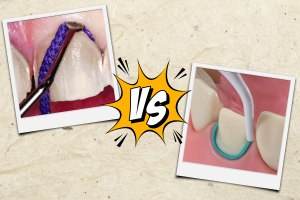Educational
-
Posted: December 08, 2023Read more »
What is an amalgam separator? An amalgam separator is a small piece of dental equipment attached to your main vacuum that separates the dental amalgam from other dental waste to keep the amalgam from ending up in our waterways.
When/ how often am I supposed to change the amalgam separator trap?
To be in compliance, the amalgam separator trap must be changed a minimum of once a year. In a busy practice, traps can be changed to upward of 3 to 4 times a year. Each refill cartridge has a ‘full line’ to let the office know when to change out their trap. Healthcare Supply, being highly concerned with its partners' compliance, offers automatic subscriptions to ensure you receive a new trap annually as a reminder to change it out.
Changing the Amalgam Separator trap of a Solmetex NXT HG5
The Solmetex NXT HG5 is the most com
-
Posted: October 04, 2023Read more »
Wondering about Cavitrons and Ultrasonic Scaling? First, let's clear something up. A Cavitron IS an Ultrasonic Scaling Unit, they are one and the same, which simply means they use water and vibrations to remove build-up in between and around your teeth at the gumline. Cavitron is just a name brand, manufactured by Dentsply Sirona, and just like Kleenex or Band-Aid Brand products, this means these are also some of the most expensive units and inserts on the market.
Let's Dig In!
Ultrasonic scaling units first need to be plugged into a power outlet and a water source. Power creates the energy for ultrasonic vibrations while a steady water stream aids the removal of debris simultaneously with the cleaning. Typically, the professional in the dental office using this equipment is the dental hygienist. This isn't to say dentists never use them, but it’s rare. Hygienists seem to be moving away from hand scaling with stainless steel instruments and working more w





